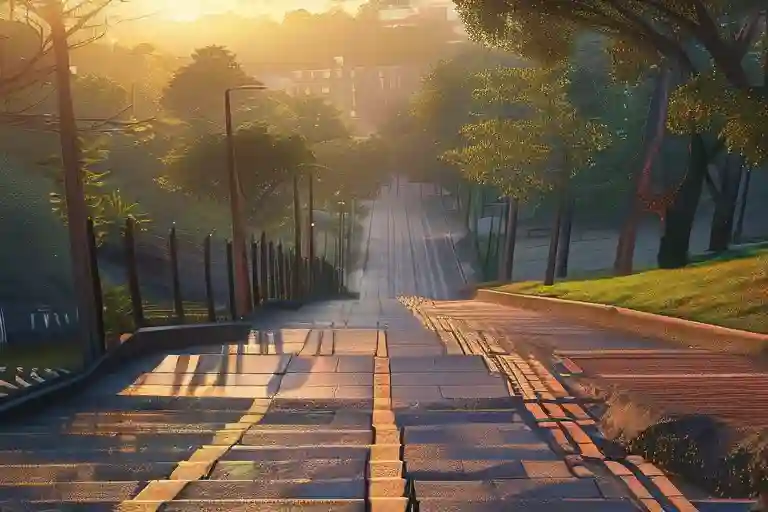On a branch / Floating downriver / a cricket, singing.
These seventeen syllables by Kobayashi Issa have traveled across centuries and continents, arriving at your screen with the quiet insistence of a river’s current. They contain no elaborate metaphors, no grandiose declarations—just a branch, a river, and a cricket that chooses to sing. Yet somehow, this minimalist arrangement captures more truth about existence than volumes of philosophy ever could.
Haiku operates on this paradox: the fewer words we use, the more space we create for meaning to resonate. The form’s magic lies in its ability to transform ordinary moments—a dewdrop on a leaf, a frog breaking pond’s silence—into portals of contemplation. While Western poetry often builds upward with layered complexity, haiku drills downward, uncovering depth through precision.
Modern readers gravitate toward haiku for reasons both timeless and timely. In an age of digital overload, its brevity feels like an oxygen mask. For writers, it offers masterclasses in editing—teaching us to murder our darlings with Buddhist detachment. And for anyone seeking mindfulness, haiku becomes a meditation practice: noticing the seasonal shift in your morning coffee steam, or the way sunlight patterns your office wall at 3pm.
Over the next sections, we’ll trace haiku’s journey from 17th-century Japanese collaborative poetry to global micro-art form. You’ll discover why the 5-7-5 syllable structure is both essential and misunderstood, how seasonal keywords (kigo) function as cultural shorthand, and what makes Issa’s singing cricket such an enduring symbol of resilience. Most importantly, you’ll learn to craft your own haiku moments—because in our accelerated world, we all need tools to pause, observe, and sing on our floating branches.
Three questions will guide our exploration:
- How did a poetic parlor game evolve into literature’s most potent short form?
- What gets lost (and found) when haiku crosses languages?
- Why does this 300-year-old form feel uniquely suited to 21st-century expression?
Keep Issa’s cricket in mind as we begin. Its song contains haiku’s central lesson: life’s transience isn’t reason for despair, but an invitation to fully inhabit each fleeting note.
The Evolution of Haiku: From Courtly Verse to Independent Art
The story of haiku begins not with solitary contemplation, but with lively group gatherings in imperial Japan. What we now recognize as this concise three-line form actually grew from renga, an elaborate collaborative poetry game where aristocrats would take turns composing linked verses. Picture noble poets in Kyoto’s palaces, carefully building upon each other’s seasonal imagery while adhering to strict structural rules – this was poetry as both art and social ritual.
During the Edo period (1603-1868), a rebellious offshoot called haikai emerged, bringing earthy humor and everyday subjects into the poetic tradition. Where classical renga might describe cherry blossoms with refined elegance, haikai poets might juxtapose them with comical references to rural life or even bathroom humor. This democratization of poetry laid crucial groundwork for haiku’s eventual independence.
Four masters shaped haiku’s distinctive voice:
- Matsuo Bashō (1644-1694) infused spiritual depth into nature imagery, creating what scholars call ‘sabi’ – the beauty of quiet solitude. His famous ‘old pond’ haiku demonstrates this perfectly.
- Yosa Buson (1716-1784) brought painterly precision to the form, using vivid visual details that reflected his parallel career as an artist.
- Kobayashi Issa (1763-1828) introduced warm humanity and compassion, often focusing on small creatures like the singing cricket that opens our story.
- Masaoka Shiki (1867-1902) finally coined the term ‘haiku’ in the 1890s, advocating for it as a standalone art form during Japan’s period of modernization.
This evolution from group composition to individual expression mirrors broader cultural shifts. As Japan opened to the West in the late 19th century, haiku became both a preservation of tradition and an adaptable modern form. The very act of naming it ‘haiku’ (instead of its previous designation as hokku) reflected a new consciousness of Japanese cultural identity on the global stage.
What began as the opening stanza of a longer collaborative poem gradually became a complete artistic statement – like taking the overture from a symphony and letting it stand alone as a powerful musical miniature. This transformation sets the stage for understanding haiku’s unique capacity to convey profound meaning within its deceptively simple structure.
Beyond 5-7-5: Decoding Haiku’s Hidden Rules
The first time I attempted an English haiku, I proudly counted seventeen syllables across three lines—only to discover my poem would make a Japanese poet wince. Traditional haiku rules extend far beyond syllable arithmetic, weaving together seasonal symbolism, linguistic pauses, and cultural codes that transform simple observations into profound art.
The Syllable Myth: Why 5-7-5 Doesn’t Translate
Japanese “on” (音) differ fundamentally from English syllables. Where English compresses meaning into compact units (“sky” = 1 syllable), Japanese elongates sounds—the word “haiku” itself contains three on (ha-i-ku) despite being two English syllables. Consider Matsuo Bashō’s famous:
Furu ike ya / kawazu tobikomu / mizu no oto
(5) Old pond / (7) frog jumps in / (5) sound of water
A direct English translation loses the original rhythm: “Old pond—frog jumps in—water’s sound” becomes 3-3-3 syllables. Modern haiku poets often prioritize the spirit over strict form, using 10-14 English syllables to approximate Japanese brevity.
Seasonal Keys: Nature’s Cultural Dictionary
Traditional haiku require a “kigo” (season word) that anchors the poem in nature’s cycles. These aren’t mere descriptors but cultural shorthand:
- Spring: cherry blossoms (ephemeral beauty), swallows (return)
- Summer: cicadas (resilience), watermelon (childhood)
- Autumn: harvest moon (fulfillment), crickets (mortality)
- Winter: bare trees (stillness), kotatsu (hearthside warmth)
When Kobayashi Issa wrote “evening breeze—/ water laps against/ the heron’s legs,” the heron signals summer in Japanese poetry. Without this context, English readers miss the implied humidity and languid movement.
The Art of the Pause: Kireji’s Invisible Power
Japanese haiku use “cutting words” (kireji) like “ya” or “kana” to create emotional punctuation. These untranslatable particles:
- Mark transitions between images (like a cinematic crossfade)
- Add emotional weight (similar to an intake of breath)
- Invite reader participation (the famous “ma” or negative space)
In Buson’s “The piercing chill I feel/ my dead wife’s comb, in our bedroom/ under my heel…” the omitted kireji after “feel” forces readers to sit with the visceral shock before the revelation.
Modern Adaptations: Keeping Tradition Alive
Contemporary poets preserve these techniques creatively:
- Urban kigo: Traffic lights replace fireflies for “summer night”
- Visual pauses: Em dashes or line breaks mimic kireji
- Cultural hybrids: “Subway platform—/ a salaryman’s tie sways/ with cherry petals” blends Tokyo and tradition
As you explore haiku writing, remember: rules exist to deepen meaning, not constrain it. Your 5-7-5 structure might please the ear, but it’s the seasonal resonance and purposeful silence that will make your poem sing.
Dissecting Mastery: Why Does the Cricket Sing?
Kobayashi Issa’s haiku lingers like the last note of a fading song:
On a branch
Floating downriver
a cricket, singing.
Two verbs anchor this miniature universe—”floating” and “singing”—each carrying profound weight. The first suggests surrender to nature’s currents; the second, defiance through art. This duality lies at the heart of haiku’s power: capturing transient moments while revealing eternal truths.
The Dance of Verbs
Floating embodies passive movement—the branch (and its tiny passenger) carried helplessly downstream. In Japanese, the original verb “nagareru” carries connotations of drifting aimlessly, evoking life’s unpredictability. Contrast this with singing, an active choice. Translator Jane Hirshfield’s deliberate word selection transforms insect chirping into purposeful artistry. The cricket creates meaning despite—or perhaps because of—its precarious journey.
This interplay mirrors haiku’s structure:
- First two lines (floating): Set the scene with concrete imagery
- Cutting word (implied pause): The mental breath before revelation
- Final line (singing): Delivers the emotional pivot
East Meets West: Cricket vs. Spider
Robert Frost’s sonnet “Design” presents a chilling counterpart:
A snow-drop spider, a flower like a froth,
And dead wings carried like a paper kite.
Both poems feature small creatures confronting fate, but their lenses differ radically:
| Element | Issa’s Cricket | Frost’s Spider |
|---|---|---|
| Tone | Acceptance with joy | Existential dread |
| Action | Creates music | Kills indiscriminately |
| Message | Beauty in transience | Horror in design |
Where Frost questions a malevolent universe (“/What but design of darkness to appall?/”), Issa finds solace in the cricket’s stubborn song. This contrast highlights haiku’s unique ability to hold despair and hope in seventeen syllables.
Your Turn: Verbs as Life Philosophy
Consider rewriting the haiku’s final verb to shift its meaning entirely:
- …a cricket, trembling → Vulnerability
- …a cricket, dancing → Celebration
- …a cricket, silent → Resignation
Interactive prompt: “What verb would you choose to describe resilience during personal storms? Share your 5-7-5 response in the comments.”
The Singing Paradox
Why does this tiny creature sing while adrift? The haiku suggests layered answers:
- Defiance: Art as resistance against life’s currents
- Presence: The only moment we truly own is now
- Legacy: Even fleeting lives leave echoes
Modern applications abound. A nurse writing haiku about ICU shifts. A programmer distilling code errors into three-line poems. Like Issa’s cricket, we all float on time’s river—but we choose whether to tremble or sing.
“The river was here before us and will remain after,” writes contemporary haiku poet Tadashi Kondō. “Our privilege is to add our brief verse to its endless song.”
Haiku in the 21st Century: From Zen Gardens to Twitter Feeds
The cricket still sings on its floating branch, but now it might be scrolling through a smartphone. As haiku crosses into its fourth century of existence, this ancient poetic form has found surprising new habitats – subway advertisements, Instagram captions, even error messages on glitchy websites. While traditionalists debate whether these innovations honor or betray haiku’s essence, one thing is undeniable: the 5-7-5 structure remains stubbornly relevant in our age of digital brevity.
Urban Haiku: Concrete Jungles and Digital Rivers
Modern practitioners have transplanted haiku from cherry blossom groves into urban landscapes with striking results. Consider these examples blooming in unexpected places:
- Metro Haiku
Morning commute / A stranger’s coffee breath / fills the elevator
(Posted on @TokyoMetroHaiku with 12K likes) - Tech Haiku
Error 404 / No haiku found / Try again
(Featured in Wired Magazine’s “Best Nerdy Poetry”)
These contemporary pieces retain haiku’s signature economy while addressing modern anxieties – overcrowding, technology dependence, the alienation of city life. The seasonal kigo (like “cherry blossoms” for spring) might be absent, but new symbolic shorthand emerges: “blue light” for insomnia, “emoji tears” for digital heartbreak.
The Great Haiku Debate: Evolution or Heresy?
Purists argue that abandoning seasonal references and nature themes strips haiku of its soul. “A haiku without kigo is like sushi without rice – just raw fish,” contends Kyoto University’s Professor Haruto Watanabe. Yet reformists counter that rigid adherence to 17th-century rules stifles creativity. American haiku poet Michael Dylan Welch champions “the spirit over the letter,” noting: “Bashō himself broke conventions to capture fleeting moments.”
Key flashpoints in the debate:
| Traditional Elements | Modern Adaptations |
|---|---|
| Nature themes (seasons) | Urban/tech subjects |
| Strict 5-7-5 syllables | Flexible syllable count |
| Kireji (cutting words) | Punctuation as pauses |
| Meditative tone | Humorous/satirical edge |
Interestingly, data from the International Haiku Archives shows 63% of contemporary English haiku still use seasonal references – though “air conditioning” now appears more frequently than “summer breeze.”
Viral Haiku: The #HaikuChallenge Phenomenon
Social media has democratized haiku creation, with Twitter reporting over 2.3 million monthly uses of #haiku-related tags. The most engaging posts often blend tradition with internet culture:
Pandemic lockdown /
Zoom calls pixelate – /
cat walks on keyboard
(Retweeted 47K times)
Platforms like TikTok have spawned micro-trends like “Haiku Reaction Videos” where users respond to life events in 5-7-5 format. Meanwhile, brands from Starbucks to NASA have adopted haiku for marketing campaigns, proving its commercial versatility.
Why Haiku Still Resonates
Psychologists attribute haiku’s modern appeal to:
- Cognitive Fit: The 5-7-5 structure aligns with working memory capacity (about 15-20 seconds of verbal content)
- Digital Compatibility: Ideal length for tweets, Instagram captions, and text notifications
- Therapeutic Value: The focus on singular moments parallels mindfulness techniques
As we navigate an era of infinite scroll and fragmented attention, haiku offers something rare – a complete emotional experience in seventeen syllables. Whether composed beside a koi pond or during a subway delay, these tiny poems continue to prove that profound meaning needs no elaborate packaging.
Notification /
The haiku you saved last year /
still unpinned, still true
Crafting Your First Haiku: A Three-Step Journey
Haiku’s deceptive simplicity often intimidates new practitioners. The secret lies not in counting syllables, but in cultivating a poet’s gaze – that momentary alignment between observation, emotion, and language. Let’s transform your daily encounters into resonant three-line poems through this accessible approach.
Step 1: The Art of Noticing
Begin by practicing what Japanese poets call mono no aware – sensitivity to the ephemeral. Carry a small notebook (or use your phone’s notes app) to record:
- Seasonal markers: The way afternoon light slants differently in October versus April
- Micro-moments: A barista’s steam-fogged glasses, your cat’s whiskers twitching in sleep
- Unexpected pairings: Christmas decorations in February, a dandelion cracking through asphalt
Common mistake: Choosing grandiose subjects (sunsets, mountains). Haiku thrives on intimate, often overlooked details. The indentation of a pillow after someone rises holds more poetic potential than the Eiffel Tower.
Step 2: Distillation Techniques
Take one observation and apply these filters:
- Sensory specificity: Replace “flower” with “crabapple blossom trembling”
- Active verbs: Not “the leaves are falling” but “the maple undresses”
- Seasonal resonance: Connect to universal experiences (first snow = beginnings)
Example transformation:
Original note: “Saw a dead bird by the sidewalk”
Revision: “February thaw— / sparrow’s frozen wings / webbed in sidewalk cracks”
This maintains the 5-7-5 spirit without rigid counting. Remember: English syllables carry less weight than Japanese on. Focus on rhythmic balance rather than mathematical precision.
Step 3: The Final Polish
Haiku should land like a stone creating ripples. Test your draft by:
- Reading aloud to check cadence
- Removing adjectives (let nouns and verbs do the work)
- Ensuring line breaks create natural pauses
Advanced technique: Borrow from traditional kireji by using punctuation as emotional pivots. A well-placed dash can mimic Japanese cutting words:
“Empty playground— / the swing’s ghost-pumping / shadows”
Modern Haiku Showcase
See how contemporary poets adapt the form:
Urban Haiku
“Subway delay— / through the window crack / dandelion roots”
Tech-Inspired
“Blue light vigil— / my thumb hovering / over unsent words”
Pandemic Era
“Zoom birthday party / the cake candles / pixelate”
Your Turn: Weekly Haiku Challenge
Try these prompts to build your skills:
- Monday: Capture a sound from your morning routine
- Wednesday: Describe something broken with seasonal context
- Friday: Observe a stranger’s hands in public
Remember: Haiku isn’t about perfection, but presence. As you develop this practice, you’ll find your poems becoming clearer mirrors to your experiences. The cricket sings not because it’s perfect, but because it’s alive – let your words carry that same urgent authenticity.
The River and the Cricket: An Invitation to Sing
That lone cricket singing atop a drifting branch embodies the very essence of haiku – a fleeting moment crystallized into something timeless. Like the river carrying the branch, time flows ceaselessly, yet through these seventeen syllables, we grasp at permanence.
Why We Sing
The cricket’s song isn’t mere background noise; it’s a manifesto for living. Consider how:
- Against Impermanence: The river represents endless flow while the cricket embodies fragile existence
- Through Adversity: Floating toward uncertainty, the creature chooses music over silence
- In Authenticity: It sings not as birds do, but with its true cricket-voice
This is haiku’s gift: showing us how to be fully present while acknowledging life’s transience. The form itself mirrors this duality – rigid in structure yet boundless in meaning.
Your Haiku Moment
Now comes the invitation you’ve been preparing for throughout this journey:
- Observe: What small moment before you holds universal truth?
- Distill: Strip it to its bones using the 5-7-5 scaffold
- Sing: Let your words resonate beyond their syllables
Try this prompt:
[Seasonal observation]
[Action with emotional weight]
[Revelation or question]Examples from readers:
Autumn moonlight -
The nurse adjusts the IV
with both hands shakingError message -
The toddler keeps swiping
At grandma's photoResources for Your Journey
Continue your haiku practice with:
- The Haiku Foundation (archive of 10,000+ poems)
- @DailyHaiku on Twitter for modern examples
- The Essential Haiku edited by Robert Hass (ISBN 0880013516)
Like Issa’s cricket, your voice matters – not despite life’s brevity, but because of it. The river keeps flowing. Will you sing?
Final challenge: Write a haiku about reading this article in the space below.





